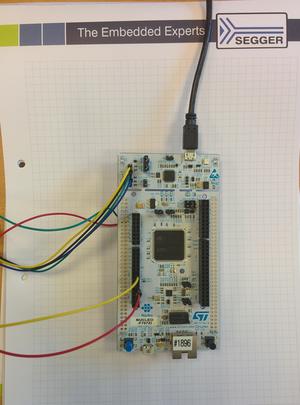Tracing on ST STM32F767
This article describes how to get started with trace on the ST STM32F767 MCU. This article assumes that there is already a basic knowledge about trace in general (what is trace, what different implementations of trace are there, etc.). If this is not the case, we recommend to read Trace chapter in the J-Link User Manual (UM08001). The ST STM32F767 MCU implements tracing via pins, so a J-Trace can be used for tracing.
Minimum requirements
In order to use trace on the ST STM32F767 devices, the following minimum requirements have to be met:
- J-Link software version V6.32g or later
- Ozone V2.56r or later (if streaming trace and / or the sample project from below shall be used)
- J-Trace PRO for Cortex-M HW version V1.0 or later
To rebuild the project our IDE Embedded Studio can be used. The recommended version to rebuild the projects is V6.30. But the examples are all prebuild and work out-of-the box with Ozone, so rebuilding is not necessary.
Sample project
Streaming trace
The following sample project is designed to be used with J-Trace PRO and Ozone to demonstrate streaming trace (1-bit trace is used in the sample project). The project has been tested with the minimum requirements mentioned above and a STM32F767_Nucleo-144 Evalboard. The sample project comes with a pre-configured project file for Ozone that runs out-of-the box. In order to rebuild the sample project, SEGGER Embedded Studio can be used.
ST_STM32F767_8MHz_TraceExample.zip
Note: As the evaluation board does not have trace pins connected by default, modifications had to be applied to the board, to make trace available. This is however not recommended by us and trace should be supported by your hardware per default.
